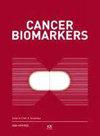Prediction of lung cancer immunotherapy response via machine learning analysis of immune cell lineage and surface markers.
IF 2.2
4区 医学
Q3 ONCOLOGY
引用次数: 1
Abstract
BACKGROUND Although advances have been made in cancer immunotherapy, patient benefits remain elusive. For non-small cell lung cancer (NSCLC), monoclonal antibodies targeting programmed death-1 (PD-1) and programmed death ligand-1 (PD-L1) have shown survival benefit compared to chemotherapy. Personalization of treatment would be facilitated by a priori identification of patients likely to benefit. OBJECTIVE This pilot study applied a suite of machine learning methods to analyze mass cytometry data of immune cell lineage and surface markers from blood samples of a small cohort (n= 13) treated with Pembrolizumab, Atezolizumab, Durvalumab, or Nivolumab as monotherapy. METHODS Four different comparisons were evaluated between data collected at an initial visit (baseline), after 12-weeks of immunotherapy, and from healthy (control) samples: healthy vs patients at baseline, Responders vs Non-Responders at baseline, Healthy vs 12-week Responders, and Responders vs Non-Responders at 12-weeks. The algorithms Random Forest, Partial Least Squares Discriminant Analysis, Multi-Layer Perceptron, and Elastic Net were applied to find features differentiating between these groups and provide for the capability to predict outcomes. RESULTS Particular combinations and proportions of immune cell lineage and surface markers were sufficient to accurately discriminate between the groups without overfitting the data. In particular, markers associated with the B-cell phenotype were identified as key features. CONCLUSIONS This study illustrates a comprehensive machine learning analysis of circulating immune cell characteristics of NSCLC patients with the potential to predict response to immunotherapy. Upon further evaluation in a larger cohort, the proposed methodology could help guide personalized treatment selection in clinical practice.通过免疫细胞谱系和表面标记物的机器学习分析预测肺癌免疫治疗反应。
尽管癌症免疫治疗取得了进展,但患者的获益仍然难以捉摸。对于非小细胞肺癌(NSCLC),与化疗相比,靶向程序性死亡-1 (PD-1)和程序性死亡配体-1 (PD-L1)的单克隆抗体显示出生存益处。通过对可能受益的患者的先验识别,将有助于个性化治疗。目的:本初步研究应用了一套机器学习方法来分析一个小队列(n= 13)接受Pembrolizumab、Atezolizumab、Durvalumab或Nivolumab单药治疗的血液样本的免疫细胞谱系和表面标记物的大量细胞计数数据。方法对初次就诊(基线)、免疫治疗12周后和健康(对照)样本收集的数据进行四种不同的比较:基线时健康vs患者、基线时应答者vs无应答者、12周时健康vs 12周应答者、12周时应答者vs无应答者。随机森林、偏最小二乘判别分析、多层感知器和弹性网络算法被应用于发现这些组之间的差异特征,并提供预测结果的能力。结果免疫细胞谱系和表面标记物的特定组合和比例足以准确区分各组,而不会过度拟合数据。特别是,与b细胞表型相关的标记被确定为关键特征。结论:该研究展示了对非小细胞肺癌患者循环免疫细胞特征的全面机器学习分析,并有可能预测对免疫治疗的反应。在更大的队列中进一步评估后,所提出的方法可以帮助指导临床实践中的个性化治疗选择。
本文章由计算机程序翻译,如有差异,请以英文原文为准。
求助全文
约1分钟内获得全文
求助全文
来源期刊

Cancer Biomarkers
ONCOLOGY-
CiteScore
5.20
自引率
3.20%
发文量
195
审稿时长
3 months
期刊介绍:
Concentrating on molecular biomarkers in cancer research, Cancer Biomarkers publishes original research findings (and reviews solicited by the editor) on the subject of the identification of markers associated with the disease processes whether or not they are an integral part of the pathological lesion.
The disease markers may include, but are not limited to, genomic, epigenomic, proteomics, cellular and morphologic, and genetic factors predisposing to the disease or indicating the occurrence of the disease. Manuscripts on these factors or biomarkers, either in altered forms, abnormal concentrations or with abnormal tissue distribution leading to disease causation will be accepted.
 求助内容:
求助内容: 应助结果提醒方式:
应助结果提醒方式:


